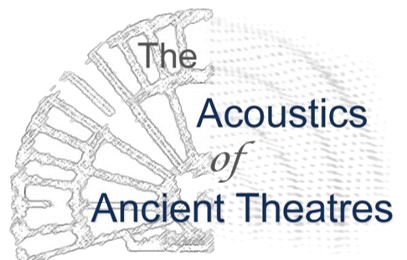
The Acoustics of Ancient Theatres
International Symposium
Verona - Italy, 6 to 8 July 2022
Does surface scattering improve speech perception compared to plain surfaces?
Nicola Prodi , Matteo Pellegatti , Chiara Visentin
DOI: https://doi.org/10.58874/SAAT.2022.200
Abstract:Ancient theatres are characterized by a peculiar impulse response where, aside the very close floor reflection, all of the
remaining components come from regularly profiled tiers of steps making up a scattered sound tail. Declerq and Dekeyser
[J. Acoust. Soc. Am.,121 (2007), 2011-2022, https://doi.org/10.1121/1.2709842] have attributed good speech reception
properties in ancient theatres to the phenomenon of back-scattering, whose ultimate effect is a filtering out of the unwanted
low frequency noise and an enhancement of the speech-related frequency range. While the regular corrugation of the tiers
of steps provides a time-lock to the scattered components, this property is mostly lost when surface scattering consists of
phase grating diffusers. Hence the question arises whether and how the speech perception could be supported by conventional
room acoustics diffusers. In this work, based on a set of experiments, it will be shown how turning one or more flat
surfaces into diffusing ones modulates performance in speech perception and affects the perceived spatial features of the
speech source. The effects of reverberation and of the spatial character of the noise (diffused or concentrated) will be
outlined too.
Keywords:
Pages:109-109
Paper:![]()